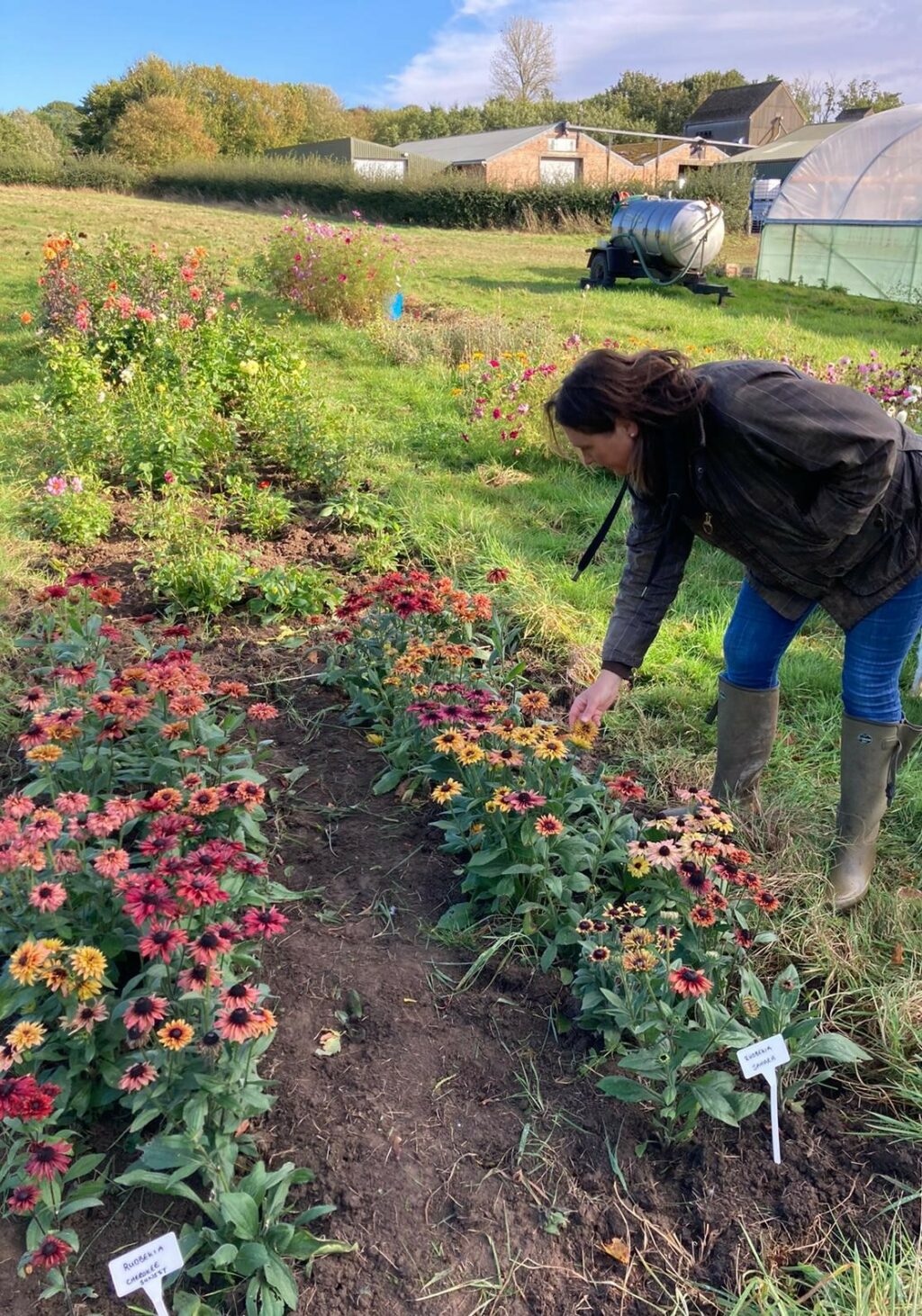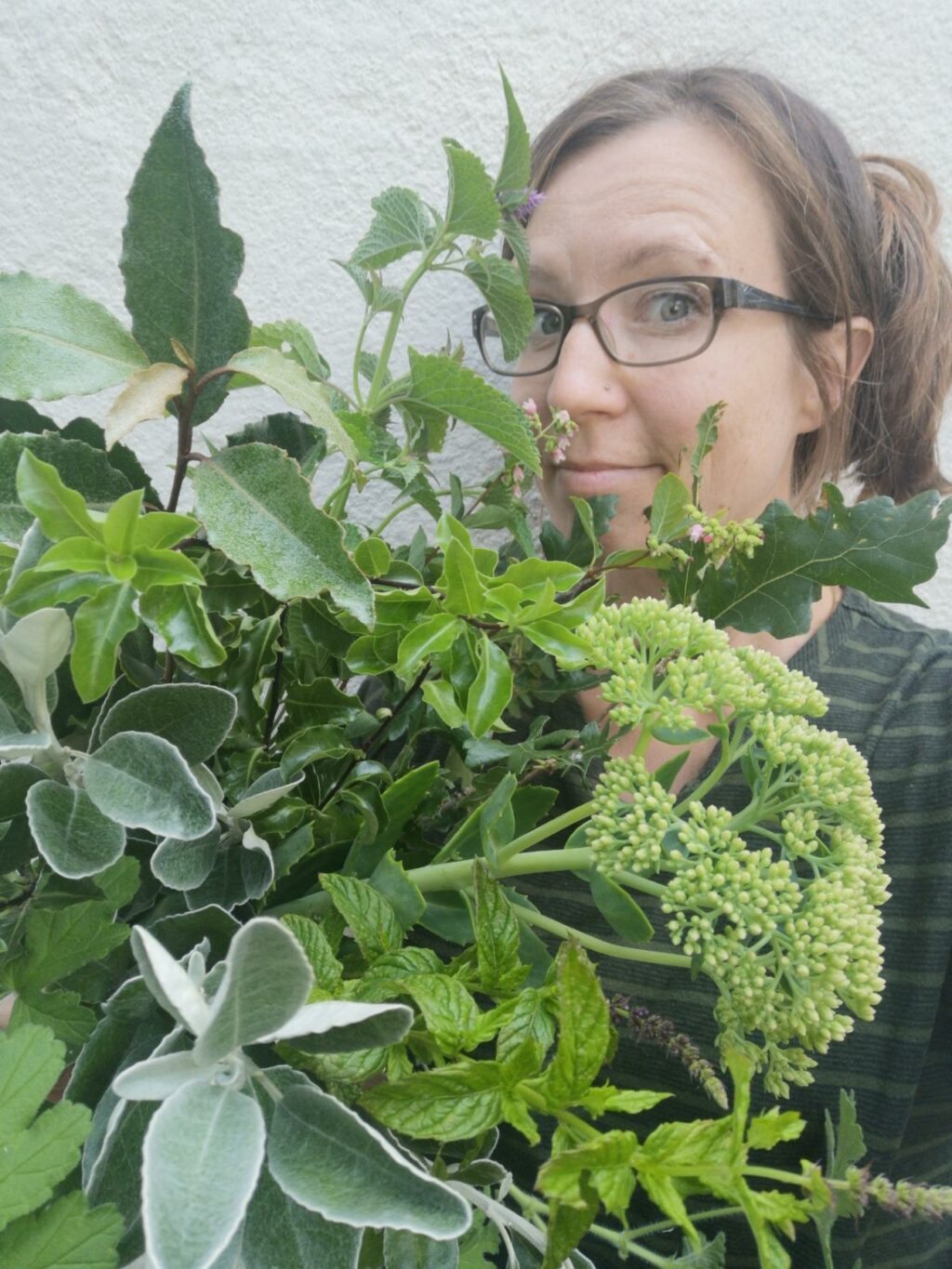When the end of summer looms finding flowers to add punch in arrangements becomes my mission. At this time of year rudbeckias are my stalwart flower. Their rich autumnal colours, their daisy shape and robust structure lend themselves perfectly to September and October displays. Also known as ‘Black Eyed Susan’, the iconic dark brown or black central button looks almost edible and adds intrigue and depth. Whilst they can be confused for small sunflowers, they are not related and my personal preference is for rudbeckias as I find their more compact size more versatile.
These prolific flowerers are available in a wide selection of colours from rich, bright yellows and oranges through to muted yellows, browns, copper, bronze and deep reds. Some varieties offer two tone flowers, going from brown at the heart of the petal through to yellows and oranges at the tip. At Brown’s British Flowers our favourite varieties to grow are Cherokee Sunset (a tall variety with large double bicolour flowers), Cherry Brandy (a deep red variety), Sahara (a selection of muted red and brown tones in a double flower) and Marmalade (golden yellow flower but sometimes marked with mahogany brown at the centre of the petals).

Josie inspects her rudbeckia. Photo: Petals and Amazon Florist, Bedfordshire.

The range of colours shout of autumn. Photo: Harebell and Bee, Gloucestershire.

Rudbeckia Sahara flowers until the first frosts. Photo: Keythorpe Walled Garden, Leicestershire.
Rudbeckias are hardy and whilst some varieties are perennials (i.e. they’ll come back each year), the varieties with more complex blooms are best treated as annuals (a single crop which is cleared when flowering is over). We treat all our rudbeckias as annuals but some flower farmers do successfully overwinter them with a bit of protection from a poly tunnel or glasshouse to get earlier blooms the following year. I grow all ours from seed, sowing rudbeckia indoors in March/April. When sowing, I cover the seeds with a thin layer of compost and press in well. Germination rates have always been good and once they have grown on to a small healthy plant, they are taken outside for a few hours each day (hardened off) before planting out in early summer. Flowers start appearing in early August and soon they come on thick and fast. They can grow tall and we find creating a twine corral around the block the best way to support them.
When cutting, it is important to cut once the flower is well matured (i.e. not in bud) because if cut too early, the stems can droop and the flower is unlikely to develop and open. As with all cut flowers, cut in the cooler part of the day, place into clean cold water and allow the flowers to have a good drink before using. We find that rudbeckias have a fantastic vase life and with a bit of attention they can still look fantastic two weeks after cutting. You can also dry rudbeckias and they hold onto their colour fantastically well. They’re a must for any flower farmer and I hope to have whetted your appetite to try at least a couple of varieties in your cutting patch next year.



